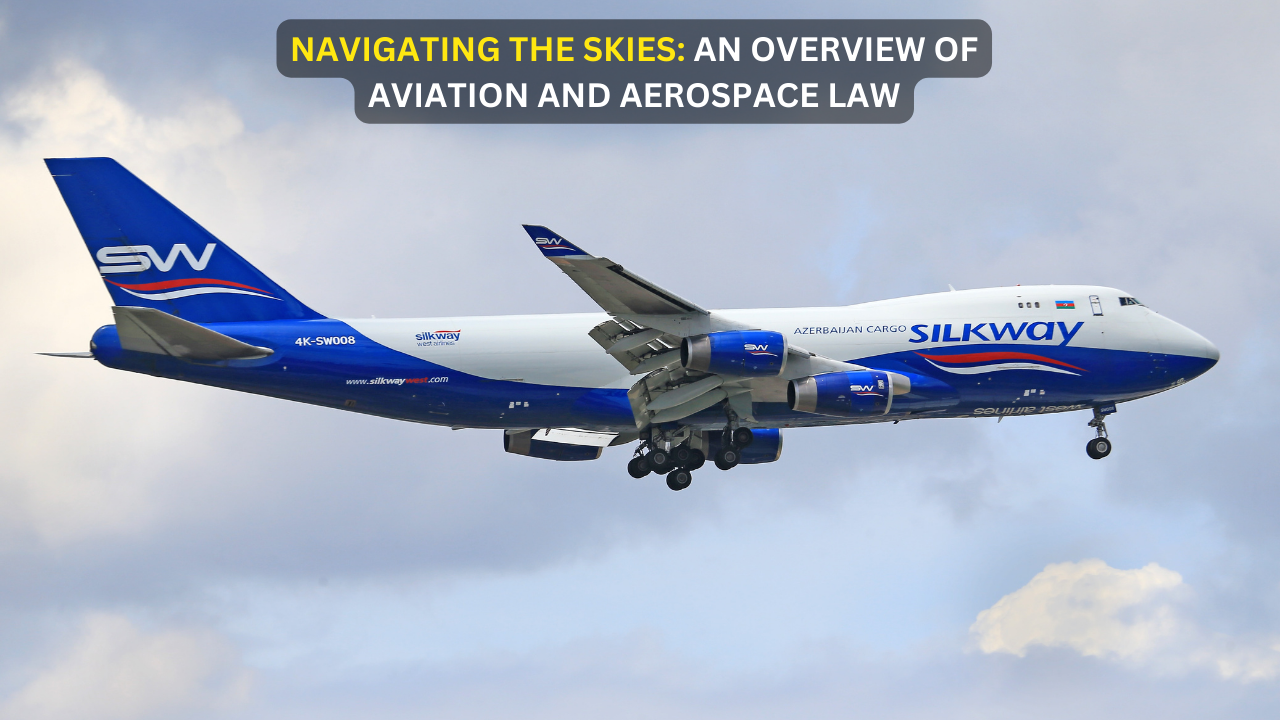The realm of aviation and aerospace represents a testament to human innovation and exploration. From the first powered flight to the exploration of outer space, these fields have transformed the way we perceive our world and the universe beyond. However, such transformative endeavors require comprehensive legal frameworks to ensure safety, regulation, and responsible development. Aviation and aerospace law encompasses a wide array of regulations and statutes that govern everything from flight operations and air traffic control to space exploration and satellite deployment. This article provides an in-depth overview of aviation and aerospace law, highlighting its historical development, key components, challenges, and future prospects.
Historical Development
The history of aviation and aerospace law is closely intertwined with the evolution of flight technology. As airplanes took to the skies and space exploration became a reality, governments and international organizations recognized the need for legal frameworks to address the complex issues arising from these advancements.
1. Early Regulations: In the early days of aviation, the primary focus was on safety and the regulation of flight operations. Governments established rules for pilot licensing, aircraft inspections, and flight paths to prevent accidents and ensure public safety.
2. International Air Law: The development of international air law was spurred by the need to address the challenges of transboundary flight. The Paris Convention of 1919 marked the first step toward international cooperation on aviation regulations, leading to the establishment of the International Civil Aviation Organization (ICAO) in 1944.
3. Space Law: The space age brought about the need for regulations that extended beyond the Earth’s atmosphere. The Outer Space Treaty of 1967, which prohibits the militarization of outer space and asserts that space is to be used for peaceful purposes, laid the foundation for space law.
Key Components of Aviation Law
Aviation law encompasses a range of legal provisions that ensure the safe and efficient operation of aircraft, both domestically and internationally.
1. Air Traffic Control: Regulations govern air traffic control operations, ensuring the safe separation of aircraft and efficient management of airspace. Air traffic control laws include rules for communication between pilots and controllers, navigation procedures, and emergency protocols.
2. Aircraft Certification: Aircraft must meet certain standards of airworthiness to ensure passenger safety. Certification processes involve rigorous testing and inspections to ensure that aircraft design, construction, and systems adhere to regulatory standards.
3. Aviation Security: Aviation security laws aim to prevent acts of terrorism and sabotage. These laws establish protocols for passenger and baggage screening, airport security measures, and cooperation between governments to maintain global aviation security.
4. Liability and Insurance: Aviation law addresses issues of liability and insurance in the event of accidents, collisions, or other incidents. This includes liability of airlines, manufacturers, and other parties involved in aviation operations.
Key Components of Aerospace Law
Aerospace law extends legal principles beyond the Earth’s atmosphere to cover activities related to outer space and celestial bodies.
1. Space Exploration and Research: Regulations pertaining to space exploration cover issues such as the launch and operation of spacecraft, the allocation of orbital slots, and the protection of celestial bodies.
2. Satellite Deployment: Laws governing satellite deployment address the licensing and regulation of satellite operations, including communication, navigation, and remote sensing satellites.
3. Space Debris Mitigation: As space debris becomes an increasing concern, aerospace law includes measures to mitigate the creation of space debris and ensure responsible space operations.
4. International Space Law: International space law is based on agreements and treaties that establish the legal principles for the use and exploration of outer space. The Outer Space Treaty, the Moon Agreement, and other agreements set the groundwork for international cooperation and peaceful exploration.
Challenges in Aviation and Aerospace Law
The rapid pace of technological advancement, the complexities of international cooperation, and emerging issues in aviation and aerospace present ongoing challenges to legal frameworks.
1. Emerging Technologies: The advent of unmanned aircraft systems (drones), supersonic flight, and commercial space travel has introduced new regulatory challenges. Governments must adapt regulations to account for these technologies while ensuring safety and responsible use.
2. Globalization and International Cooperation: Aviation and aerospace are inherently global industries, requiring international cooperation and harmonization of regulations. Balancing national interests with global standards is a complex endeavor.
3. Space Traffic Management: As more nations and private companies enter space, the management of space traffic becomes crucial to prevent collisions and maintain the sustainability of orbital environments.
4. Intellectual Property and Space Resources: The utilization of space resources, such as mining asteroids, raises questions about ownership and intellectual property rights. International agreements may need to address these issues as commercial space activities expand.
Future Prospects and Considerations
As aviation and aerospace technologies continue to evolve, the legal frameworks governing these fields must evolve as well.
1. Sustainable Aviation: The aviation industry is increasingly focused on reducing its environmental footprint. Future regulations may address emissions standards, noise pollution, and sustainable aviation fuels.
2. Commercial Space Activities: The rise of private companies engaged in space exploration and satellite deployment requires legal frameworks that balance innovation and safety.
3. Space Tourism: The emergence of space tourism raises questions about liability, safety regulations, and the protection of passengers’ rights.
4. International Space Collaboration: As interest in space exploration grows, international collaboration and cooperation may become even more important, necessitating updates and expansions of existing space treaties.
Conclusion
Aviation and aerospace law are at the intersection of human ingenuity and legal regulation. From ensuring the safety of air travel to regulating satellite operations and space exploration, these legal frameworks provide the foundation for the advancements that continue to shape our world. As technology evolves, so too must the laws that govern it, in order to ensure that the skies and the universe beyond remain safe, accessible, and responsibly explored

